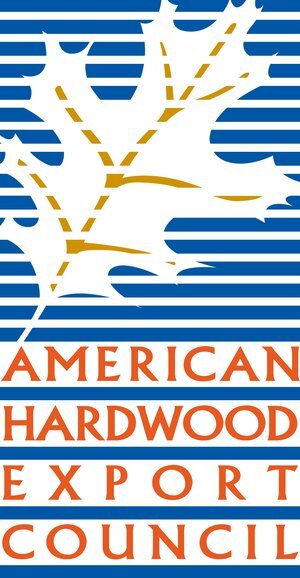A message from John Chan
Regional Director Southeast Asia and Greater China – American Hardwood Export Council
Specifying for Sustainability with Certainty
How AHEC’s approach goes beyond existing forest certification systems
I would like to congratulate the AIA IR for staging their conference virtually this year. The COVID pandemic has caused us all to take a step back and consider the future of the world we live in and it is fitting that the conference theme of “Catalyzing Change” will explore the challenges we face as we seek to change the world for the better.
It is now more important than ever that we protect our natural environment and turn our intentions to preserve it into action. One way in which we can do this is to be certain that the materials we choose come from sustainable sources and the choices we make are environmentally sympathetic. Architects and designers are acutely aware of the responsibility they carry in ensuring our built environments enhance our lives without compromising the future of the planet. Decisions have to have material choice at their heart and timber can be one of the few truly sustainable options that you have in your consideration set. However, until now, standards for ‘sustainable timber’ are still typically equated with FSC and PEFC certification.
Pictured: Bloomberg European HQ, London. American red oak
Many of the requirements focused on certification have to date been limited. They do not accommodate the need for broader metrics of sustainability in the forest products sector or recognise the importance of other issues not covered by forest certification. These include carbon footprint and other life cycle impacts; transparent information on national forest governance; the quality of forest resources at national and regional level; clear data on species volume, growth and harvest; efficient use of the full range of species and grades; product durability; and waste management and disposal. What we now know is that these limitations have led authorities around the world to conclude that neither FSC nor PEFC certificates alone are an adequate assurance that timber is at negligible risk from illegal harvest nor that sustainability can be guaranteed.
Earlier this year AHEC released a new report that demonstrates the sustainability of U.S. hardwoods by comparing the requirements for responsible timber sourcing in regulations (such as in EUTR in the EU and Lacey Act in the U.S.) and typically contained in public and corporate procurement policies. The results of the report proved that, in several important respects, AHEC’s strategy goes beyond what is deliverable by forest certification systems like FSC and PEFC and is much wider in scope than most timber procurement policies.
Forest certification systems like FSC and PEFC require compliance with a wide range of good forestry practices to be demonstrated by an accredited third party. They also require that wood be traced through the supply chain to a certified forest management unit. The concept has proved valuable for buying organisations seeking to demonstrate that their timber products derive from well-managed forests. However, certification has certain limitations. While it can work well when timber is traded in large and relatively undifferentiated commercial volumes from large state and industrial forest holdings, it is technically more challenging to implement where forest management units and supply chains are more fragmented. Although approximately 22 percent of the total forest area in the hardwood growing region of the United States is certified, the certified area is concentrated in larger consolidated areas of state forest land or private land managed by Timber Investment Management Organizations and Real Estate Investment Trusts.
Over 90 percent of hardwood supply in the United States derives from non-industrial landowners, of which there are nearly 9 million with an average area of less than 10 hectares. There is little incentive for these non-industrial forest owners who do not prioritise timber production, and typically harvest only once in a generation, to apply to certify. The sheer number of owners and the fragmentation of supply chains creates additional and significant challenges for wood tracking. In addition to discriminating against smaller forest operators and traders, another limitation of certification is that it cannot substitute for good forest governance and is open to abuse where this is absent.
Pictured: The species diversity of the natural US forest resource
I am proud that AHEC is able to provide an alternative, and more robust solution to providing certainty of the legality and sustainability of American hardwood species through the development and integration of a number of innovative mechanisms. These mechanisms draw on comprehensive national data sets on forest resources, governance and management and independent risk assessment involving the collection and systematic analysis of data to demonstrate that all U.S. hardwood is legal and sustainable.
The first step has been to assess the quality of forest governance in a particular region by combining the data from the USDA Forest Inventory and Analysis (FIA) program on forest volume, growth and harvest with information on forest laws and institutions.
In addition, AHEC was also one of the first to commission a comprehensive LCA study of the cradle-to-gate environmental impacts of delivering U.S. hardwood lumber and veneer in 2012. This study is unique in the wood sector for the level of detail on environmental impacts provided for individual species and thicknesses of lumber and transport scenarios. The AHEC website hosts an LCA tool providing easy access to environmental impact data on selected American hardwood species and thickness to the overseas customer using the specified transport route.
You may already be aware of the AHEC ‘Seneca Creek’ Study which was first commissioned in 2008 and updated in 2017. These peer reviewed reports provided credible third-party risk assessment in relation to U.S. hardwood exports. Both studies confirmed not only a negligible risk of illegal harvesting of U.S hardwoods but also of unsustainable practices.
We have made data from all of these sources available to our members and their customers through the American Hardwood Environmental Profile (AHEP). This is a simple way of providing species specific certainty of legality and environmental impact. AHEPs can be issued by AHEC members either for the term of an individual supply contract or for individual consignments of U.S. hardwood exported to anywhere in the world. It gives those who specify American hardwoods for their projects evidence and confidence that their choice is environmentally responsible and exceeds all legal requirements. We continue to push for the full integration of scientific life cycle data into the design and procurement processes of all of our related industries. It is an important contribution to ensuring the continued sustainability of the American forest resource and in turn a better world. I am grateful that we are all pursuing this journey together. I hope you all enjoy the conference – stay safe and healthy.
About AHEC
The American Hardwood Export Council (AHEC) is the leading international trade association for the U.S. hardwood industry, representing the committed exporters among U.S. hardwood companies and all the major U.S. hardwood production trade associations. AHEC runs a worldwide programme to promote American hardwoods in over 50 export markets, concentrating on providing architects, specifiers, designers and end-users with technical information on the range of species, products and sources of supply. In addition, AHEC also produces a full range of technical publications. For more information, please visit: www.americanhardwood.org/SEA or www.ahec-China.org






